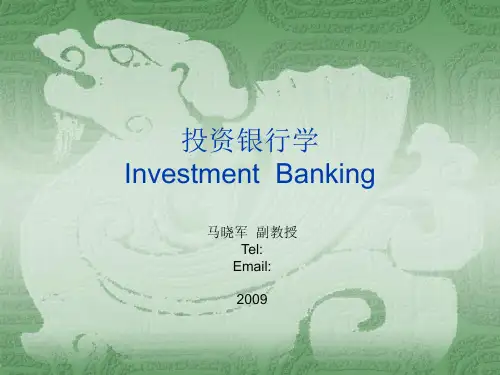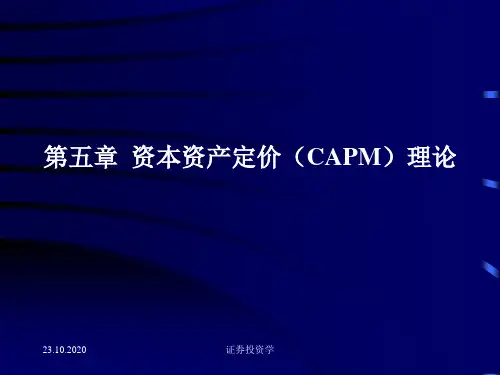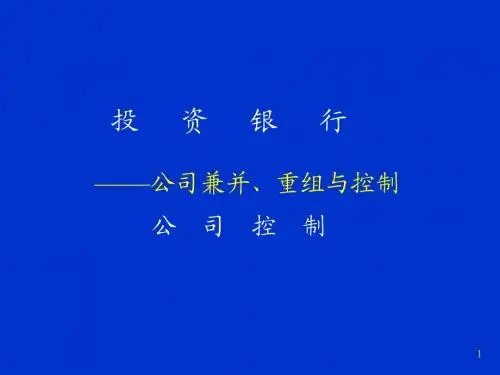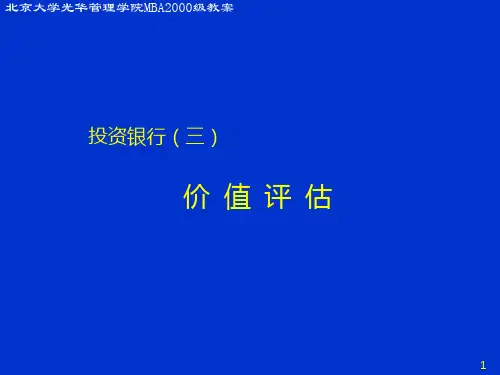能够进行充分准确的预测。
23.10.2020
证券投资学
– 假设1:在一期时间模型里,投资者以期望回报率 和标准差作为评价证券组合好坏的标准。
– 假设2:所有的投资者都是非满足的。 – 假设3:所有的投资者都是风险厌恶者。 – 假设4:每种证券都是无限可分的,即,投资者可
以购买到他想要的一份证券的任何一部分。
23ห้องสมุดไป่ตู้10.2020
证券投资学
• 这一特性称为分离定理: 我们不需要知 道投资者对风险和回报的偏好,就能够 确定其风险资产的最优组合。
• 分离定理成立的原因在于,有效集是线 性的。
23.10.2020
证券投资学
– 例子:考虑A、B、C三种证券,市场的无 风险利率为4%,我们证明了切点证券组合T 由A、B、C三种证券按0.12,0.19,0.69的 比例组成。如果假设1-10成立,则,第一个
风险利率借或者贷再投资到切点证券组合上。
23.10.2020
证券投资学
idea
• 所有的投资者为价格接受者:在给定的价格系 统下,决定自己对每种证券的需求。由于这种 需求为价格的函数,当我们把所有的个体需求 加总起来,得到市场的总需求时,总需求也为 价格的函数。价格的变动影响对证券的需求, 如果在某个价格系统下,每种证券的总需求正 好等于市场的总供给,证券市场就达到均衡, 这时的价格为均衡价格,回报率为均衡回报率。 这就是资本资产定价模型(Capital Asset Pricing Model,简称为CAPM)的思想。
23.10.2020
证券投资学
What if
• We will approach the CAPM by posing the question “what if”, where the “if” part refers to a simplified world. Positing an admittedly unrealistic world allows a relatively easy leap to “then” part. Once we accomplish this, we can add complexity to the hypothesized environment one step at a time and see how the conclusions must be amended. This process allows us to derive a reasonably realistic and comprehensible model.






